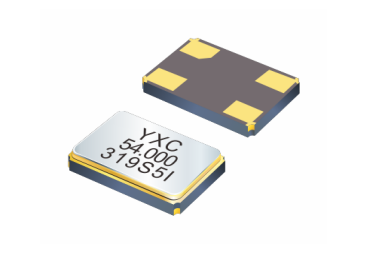8M passive crystal oscillator and 24M passive crystal oscillator are both common crystal oscillators that work with matching MCUs.

Passive crystal oscillators 8MHz and 24MHz are generally not universal. This is determined by their role in the circuit and the circuit's frequency requirements. The following is a detailed explanation from multiple aspects:
1. Chip clock requirements
Different chips have specific requirements for clock frequency. For example, when designing some microcontrollers (MCUs), the logic timing of the internal circuit, the instruction execution speed, etc. are all planned based on a specific clock frequency.
For some MCUs based on the ARM Cortex-M0 core, if the design requires the use of an 8MHz crystal oscillator as the system clock, the internal bus speed, the operating frequency of the peripheral modules, etc. are coordinated and run according to this benchmark. If it is replaced with a 24MHz crystal oscillator, the clock frequency will be too high, exceeding the range in which the internal circuit of the chip can work stably, and there may be problems such as instruction execution errors and peripheral communication disorders.
2. Clock division and multiplication design in the circuit
In some circuits, although the final system operating frequency is not the original frequency of the crystal oscillator, the frequency of the crystal oscillator is the basis for obtaining the required clock through division or multiplication.
For example, a circuit uses a phase-locked loop (PLL) to quadruple the crystal oscillator frequency to obtain the system clock. If an 8MHz crystal oscillator is originally used, a 32MHz system clock is obtained after quadruple multiplication. If a 24MHz crystal oscillator is used, a 96MHz clock will be obtained after the same quadruple multiplication, which is far beyond the original operating frequency range of the circuit design, and the circuit cannot work properly.
On the contrary, if the circuit divides the crystal oscillator frequency, for example, the crystal oscillator frequency is divided by 8, then the 8MHz crystal oscillator is divided to obtain a 1MHz clock. If it is replaced with a 24MHz crystal oscillator, the division is 3MHz, which will also destroy the original working rhythm of the circuit.
3. Frequency requirements for specific application scenarios
In some applications with high requirements for frequency accuracy and stability, such as wireless communication, high-precision measurement, etc., specific frequencies correspond to specific communication protocols, measurement algorithms, etc.
In wireless communication, the crystal frequency determines the carrier frequency. The 8MHz crystal is used for communication in a certain frequency band, while the 24MHz crystal corresponds to a different frequency band. Random replacement will result in the inability to establish a communication connection with the other device.
In some high-precision measuring instruments, an 8MHz crystal is used for time reference measurement. If it is replaced with a 24MHz crystal, the measured time accuracy and data will be wrong, and accurate measurement results cannot be obtained.
However, in rare cases, if the compatibility is fully considered during circuit design, and the requirements for clock frequency are not strict, and the oscillation circuit can adapt to the characteristics of the two frequency crystals, then 8MHz and 24MHz passive crystals may be interchangeable, but this is very rare.